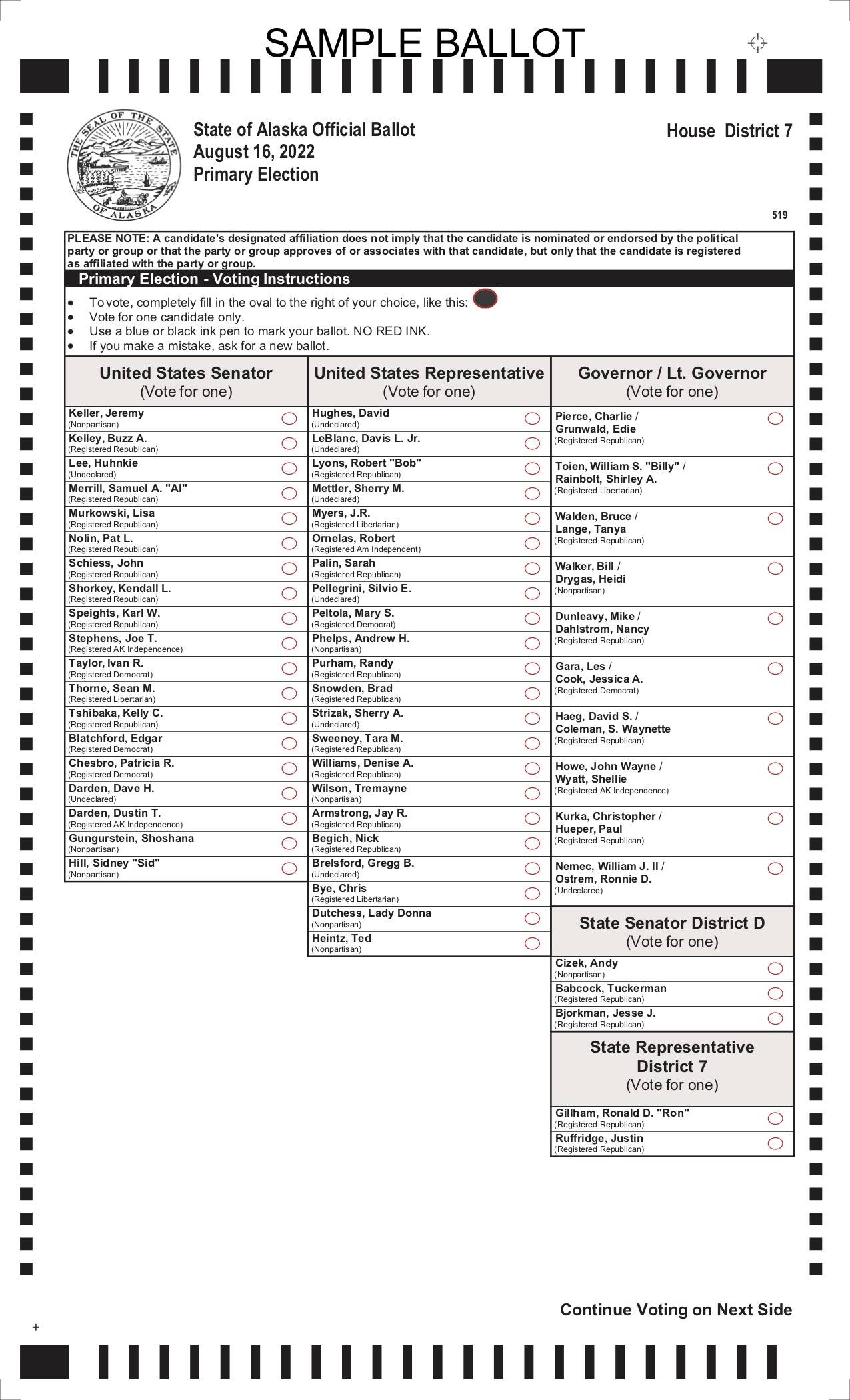Do you want to vote for Alaska’s next representatives in Congress? Make sure you’re registered to vote by Sunday, July 17. That’s the voter registration deadline for voters who want to cast ballots in Alaska’s Aug. 16 special general and regular primary elections.
Alaska voters will cast ballots in August in both the state’s special general election and the regular primary election. The special general election will be a ranked choice race, through which people can vote for more than one candidate, while the regular primary election will be another open primary, through which all voters will get the same ballot regardless of party.
In the regular primary election, Alaskans will cast ballots for Alaska governor and lieutenant governor, a U.S. representative and senator, as well as state lawmakers. In the special general election, Alaskans will pick who they want to finish out the term of the late U.S. Rep. Don Young.
Alaska’s 2022 Special Primary Election was the first to use a nonpartisan top four primary structure, under which the election’s top four vote-getters all advance to the special general election on Aug. 16, regardless of party affiliation. The special general election in August will be the first in Alaska to use ranked choice voting, under which voters can choose more than one candidate in ranked order.
Sarah Palin, Nick Begich and Mary Peltola will all appear on the state’s first ranked choice ballot after all were identified as among the top four vote-getters in June. Dr. Al Gross, a nonpartisan candidate, also emerged as one of the top four vote-getters, but dropped out of the race on June 20. Whether or not the fifth-place vote-getter, Tara Sweeney, would be bumped to the special general ballot was settled by the Alaska Supreme Court, which said she would not advance beyond the special primary.
Changes to Alaska’s electoral systems were approved by voters as Ballot Measure No. 2, which passed narrowly in 2020 with 50.55% of votes cast. That measure created an open primary system and ranked choice general election and aimed to increase transparency about the use of “dark money” — or campaign funding from undisclosed sources — in Alaska elections.
The ranked choice ballot shows a grid of bubbles, with one row for each candidate and one column for preference order. Voters fill in the bubble in the “1st Choice” column that corresponds to their first-choice candidate. Voters then move to the second column and fill in the bubble that corresponds to their second-choice candidate, and so on. Voters can rank up to four candidates, or just rank one, two or three candidates.
If a candidate receives more than 50% of the first-choice votes, that candidate would be declared the winner of the election.
If no candidate receives more than 50% of the first-choice votes, the candidate who received the least number of first-choice votes is eliminated. Then, the voters who ranked the eliminated candidate as their first choice would have their second-choice candidate votes distributed to the remaining candidates. The process will continue until one candidate emerges with more than 50% of the votes.
Alaskans can register to vote or update their voter registration information online at voterregistration.alaska.gov. More information about Alaska’s upcoming elections can be found on the Alaska Division of Elections website at elections.alaska.gov.
Reach reporter Ashlyn O’Hara at ashlyn.ohara@peninsulaclarion.com.

